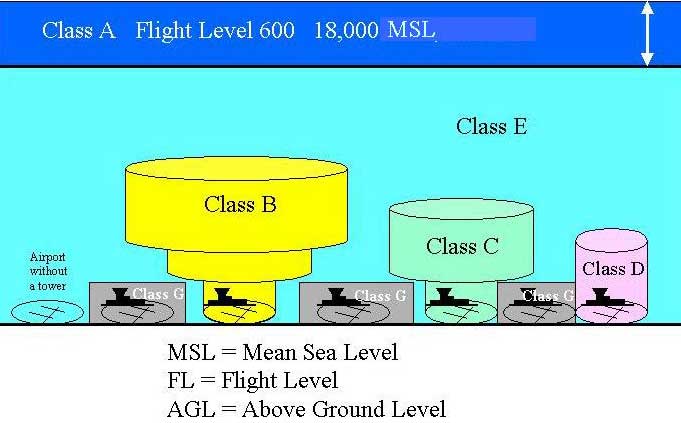
What is an ATCAA (Air Traffic Control Assigned Airspace)?
Here is a diagram of the current structure of airspace over the United States. "Class A" airspace is anything from 18,000 feet through 60,000 feet (also referred to as Flight Level 600 (FL600)). Anything operating in this band of sky is under instrument flight rules (IFR) which requires specific training and constant communication with air traffic control.
As you can see most of the sky is Class E and Class G, which are both uncontrolled and which aircraft are not even required to have radios.
Class B is the airspace surrounding major airports like Seattle-Tacoma, Minneapolis, Chicago, etc. Clearance is required for all aircraft to operate within this airspace to ensure that the controllers know what is going on for safety due to the large volume of jet aircraft in the area. Imagine them being inverted wedding cakes with uncontrolled Class E airspace surrounding them.
Class C is for busier airports like Spokane and Portland, OR. They need additional room for safety of commercial operation and require clearance to enter them, but they are smaller than Class B.
Class D is for smaller airports that have control towers. This airspace requires clearance to enter, but they are not very tall and airplanes fly over and around them without requiring any contact with the controllers.

Return to Lambert Fechter Field page